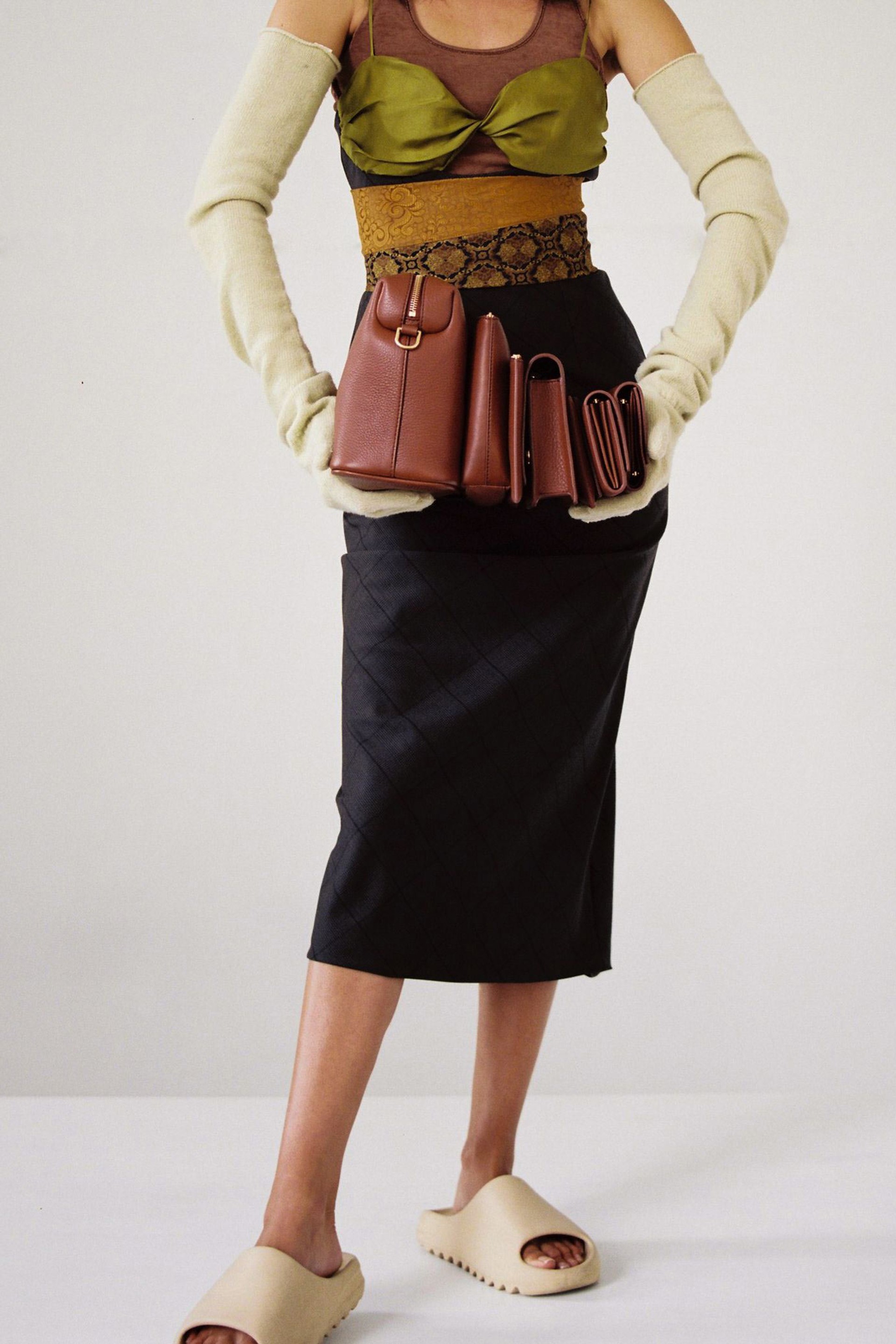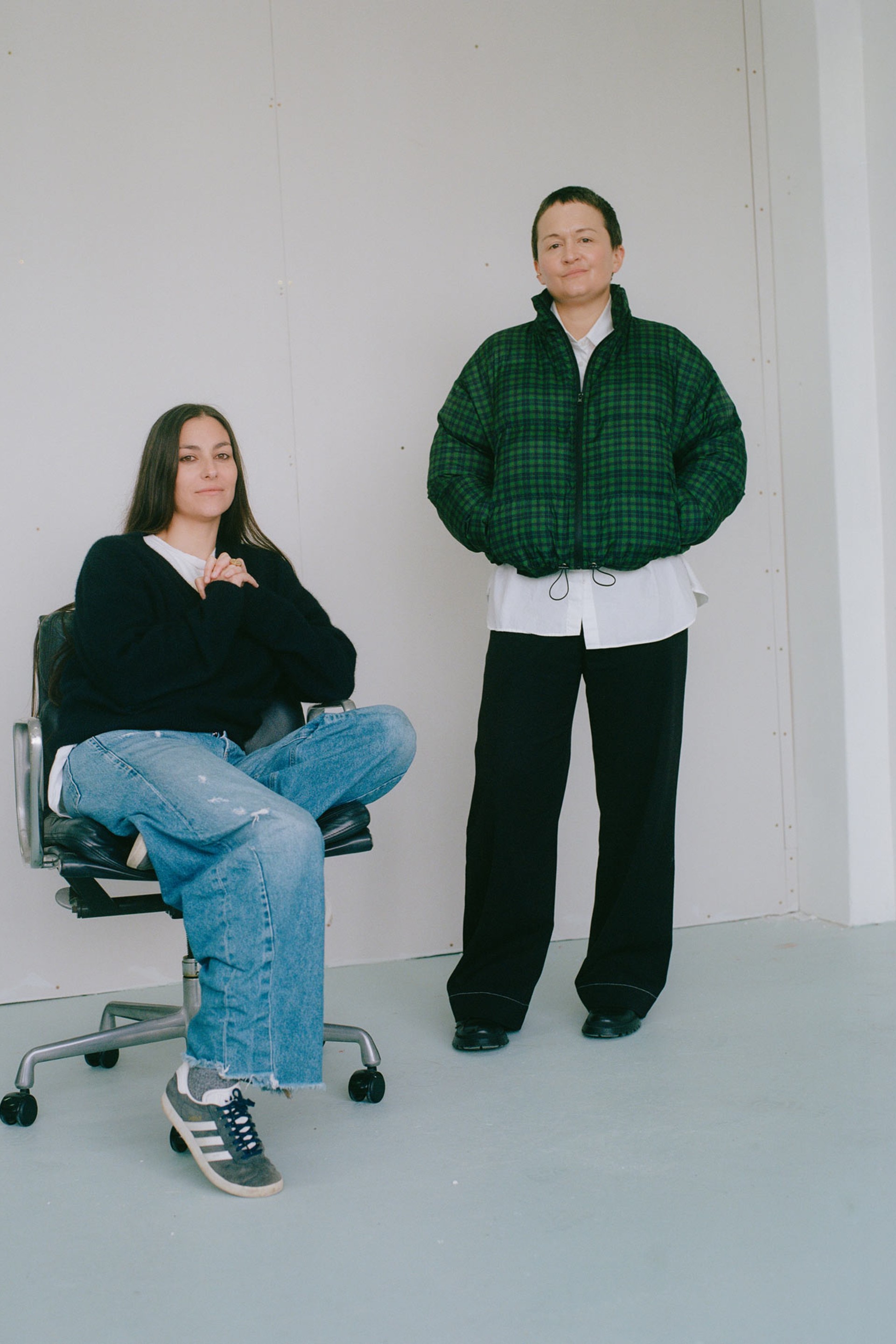In Conversation: May Art Fair
Untitled, 2025
Uku (clay) artist Georgia Tikaputini Douglas Hood speaks with Grace Director Emil Scheffmann about her work exhibited at the May Art Fair.
In partnership with May Art Fair and Grace, Club Yu Mei hosted an early morning conversation centered on the ceramics of Auckland-based artist Georgia Tikaputini Douglas Hood. Grace Director Emil Scheffmann spoke to Georgia about her exhibited works, practice, and identity.
Sarah Hopkinson: The idea of May Art Fair came about after the disruption of COVID. We wanted to create something new—an initiative that supports galleries and friends to reconnect easily. We aimed to make exhibiting more accessible and affordable, so galleries could take more risks and offer experimental programming. That includes unconventional formats—different ways of showing and seeing.
Sarah Hopkinson, Jessie Wong, Georgia Tikaputini Douglas Hood and Emil Scheffmann.
Emil Scheffmann: As part of the fair, Grace is working with Georgia Tikaputini Douglas Hood, an uku artist in their early years of practice. Georgia is reflective of the artist communities we focus on at Grace, with our programme specialising in the representation of important early career practices. For this presentation, Georgia’s work appears alongside the paintings of Christian Dimick, and as is often the case at Grace, these two artists were invited with an existing friendship.
I first came across Georgia’s work via a small exhibition she had with Christian last year. I was immediately blown away by her work, and from that point, Georgia and I began working together on her debut exhibition at Grace, Āmene (2024). The practice is young, but as I think you will see, there are deep currents at play. Georgia, handing over to you!
Georgia Tikaputini Douglas Hood speaks about her work as part of Grace Galleries' exhibition at May Art Fair.
Georgia Tikaputini Douglas Hood: Hi, I’m Georgia. I’m of mixed heritage—Māori and Pākehā—and my work explores that dual identity. The European side often comes through in the shapes I create: ancient Greek, neoclassical, sometimes Victorian, I draw on a broad set of references from my pākehātanga. I’ve always been drawn to these forms, their grandiosity and the way they hold space has always intrigued me.
When I first started working with clay, I fell in love instantly. Since then, I’ve been trying to understand why. Recently, I’ve begun researching Māori clay artists, particularly a collective from the 1990s led by Baye Riddell named Ngā Kaihanga Uku. These makers were pivotal, and remind us that while clay isn’t traditionally part of Māori art practice (which focused on materials like wood and stone), it has become an important expression of our wairua. Using clay feels intuitive, it’s part of the earth, and our relationship to the land is deep.
Emil Scheffmann: Shall we start at the end?
Georgia Tikaputini Douglas Hood: Good idea. This piece here is called The First Breath, and it was the last I made in the collection. In Māori cosmology, Hineahuone—the first woman—was formed from clay by Tāne Mahuta, the god of nature. He gave her the breath of life—“Tīhei mauri ora”. This work is a nod to that story and to the power of clay as a medium for creation.
Emil Scheffmann: In our studio visits, we’ve previously talked about how this Māori creation story has striking resonance with the Judeo-Christian vision of God breathing life into the clay form of Adam.
Georgia Tikaputini Douglas Hood: Absolutely. I am really interested in these moments of intersection between Māori and Pākehā history.
Next to this piece is a pot that uses a similar coiling form, Her name is Ngohe. Ngohe translates to ‘Obedience’, and sets a darker tone in my mind. The piece reflects, perhaps, the post-colonial restrictions that shape growth and identity within te ao Māori. I’m still working through that tension, but it’s something I feel deeply.
Grace Galleries exhibition space at May Art Fair, Tāmaki Makaurau.
Emil Scheffmann: When we worked on Āmene last year, we talked a lot about those tensions—the way European forms like Victorian ceramics can feel restrictive or corseted. But Georgia’s filtering those forms through a Māori lens, opening up her own questions.
Georgia Tikaputini Douglas Hood: Yea, I’m feeling more sensitive to the things that are hard to say in the pots. When I first started on this mahi around the pots, I was trying to get a quite direct message across, to say something kind of sinister through these European shapes.
Recently though, I’ve felt more confident to let the references and interactions within the pots do their own thing. I know what I want to say, but there are all these moments that feel bigger than me and I’m still navigating that.
Emil Scheffmann: In many of your pots, there’s an earthy, organic form that emerges. A curator friend described the pots as “appearing to have grown upwards from the earth”. Some of the spiral forms almost suggest root systems of trees. Does this have any resonance for you?
Georgia Tikaputini Douglas Hood: Yes, this comment really stuck with me actually. Whenua can mean both earth and placenta, so the idea that these ancestral figures I have formed with clay look as if they are growing from the earth is a beautiful connection to be made.
When I make a vase, I usually have an idea of something more dynamic to come—something expressive on top of the foundation. I build the base, then carve into it. The process feels intuitive and grounded.
Some pieces have movements and curves that feel bodily. There’s a sense of tension, maybe even compression. That led me to think about the humanised body, and how colonial ideas have shaped what’s allowed or restricted.
Emil Scheffmann: This sense of the body that emerges through your form is really interesting.
Georgia Tikaputini Douglas Hood: Yeah, I suppose what drives me most in my mahi is our history as Māori and what our Kuia and Koro have had to deal with and go through their entire lives. Which is where all of this mamae comes from in the work. So my Tupuna naturally appear as a nod to them.
Untitled, 2025
Emil Scheffmann: There’s definitely pain and maybe even lamentation in the work, though sometimes, the forms also feel defiant and more bold. Such as in Hīkoi ki te tōpito o te Ao.
Georgia Tikaputini Douglas Hood: Yea, this piece was one of the first in the series. The title translates to “walk to the ends of the earth.”
I made the piece after going on the hīkoi. I felt so proud and uplifted, being among others, supporting each other. That energy is in the work. It’s interesting how the pieces shift in meaning over time.
Emil Scheffmann: When we were installing the piece, and you finally got the placement right, I watched you stare at the pot before flexing your biceps in satisfaction at it. At that moment, I realised that these handles aren’t just a neoclassical form interacting with a koru—they’re also arms, possessed of strength. That moment really struck me.
Georgia Tikaputini Douglas Hood: [Georgia laughs] Yea, that one is especially strong. Hīkoi still has all of the themes of mamae that are within the rest of the series but rises up in strength and mana. It’s kind of funny because the terms used to describe the parts of a vase are also used to describe the body; the foot, the body, the neck, the arms. So I suppose it was my natural response to seeing Hīkoi standing there.
Hīkoi ki te tōpito o te Ao, 2025
Audience Q&A
Q: How long does it take to make one piece?
Georgia Tikaputini Douglas Hood: It depends. I might spend a couple of days building, then two weeks to dry—especially in winter. Then I fire, glaze, and fire again. All up, it takes a while, sometimes months. But I’m still learning and loving it.
Q: Are you a builder, not a thrower?
Georgia Tikaputini Douglas Hood: Yes, I hand-build everything. Instead of using a wheel, I roll clay into coils and shape it with my hands. I love how tactile and intuitive it feels.
Q: Can we touch the works?
Georgia Tikaputini Douglas Hood: Yes, please do! I touch them constantly while making them, and I want others to feel that texture. I like the idea that when someone touches a piece, they almost imagine how it was formed. The clay is often colder than people expect. I get the sense they want to be touched. Like a cold hand in winter.
Q: What clay do you use?
Georgia Tikaputini Douglas Hood:
Mostly dark stoneware and some reclaimed stoneware. Ideally, I’d use Aotearoa clay, but at the moment I’ve been using a batch from Laguna Beach, California—it just works really well for what I’m doing.
I experimented with digging my own clay last year in Portugal. I found some along a bike trail, packed it into my backpack, processed it, and made some pieces. It was a bit raw, but really satisfying.
I also did a residency at Crete, where I learned a lot from a very tough but brilliant mentor. She really pushed me, and I’m grateful for that.
Bag 0
Duties and taxes included for Australia and New Zealand
Carbon Neutral Shipping
Shipping
| New Zealand | Complimentary Shipping over $50 NZD, Complimentary Returns, Click & Collect |
| Australia | Complimentary Shipping over $200 AUD |
| Rest of World | Complimentary Worldwide Shipping over $200 USD |
Areas
| New Zealand | Orders shipped within 2-3 working days, sent via tracked Courier Post. |
| Australia | Orders shipped within 2-3 working days, sent via tracked DHL Express |
| Rest of World | Orders shipped within 2-3 working days, sent via tracked DHL Express |
New Zealand and Australia
Taxes and duties are included within the purchase price.
Rest of World
As orders are shipped from our New Zealand warehouse you may incur duties, clearance fees or local taxes. Yu Mei Ltd does not cover these charges and is not liable for any fees incurred; although we will always do our very best to ensure a smooth delivery to you. For more information, we advise you to check with your local customs agent.
Choose Your Shipping Region / Currency
Change Region / Currency
Join
Club Yu Mei
Club Yu Mei is a community of like minded, forward thinking individuals. It’s a place to celebrate those who inspire the Yu Mei brand and beyond. From interviews and ideas to events, debates, dinner parties and more, the Club is an inclusive space by real people, for real people. Unlock our cabinet de curiosités and discover the thought-provoking universe of Club Yu Mei.
Search
Popular Searches
Choose Your Shipping Region / Currency
By continuing to use this site you consent with our cookie policy.
To stay abreast of all things Yu Mei, join our Club newsletter and enjoy 10% off your first purchase.










